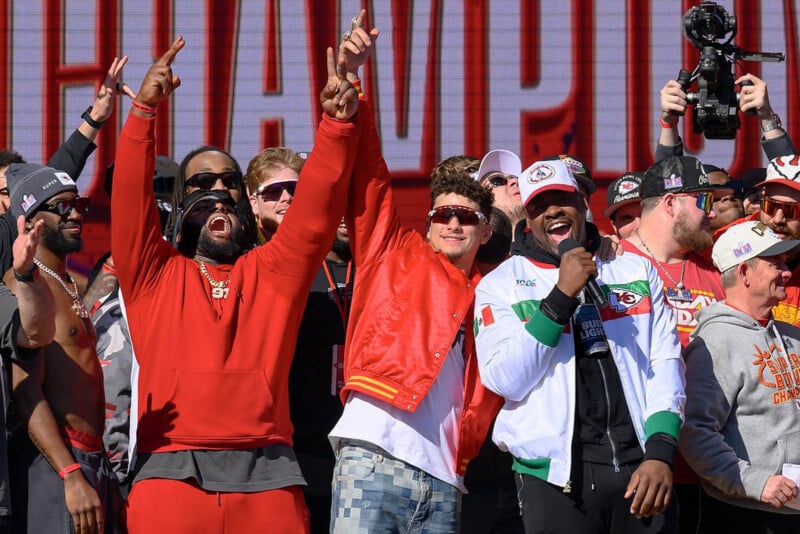
![]()
While I photograph the Kansas City Chiefs’ home games during the season, I don’t go along if they make the playoffs or Super Bowl. But that doesn’t mean I’m finished doing assignments involving them. This year, for instance, I was hired to cover their departure from Kansas City to Las Vegas, then the big downtown watch party the night of the game, and finally the victory parade and celebration that went from ecstatic to horrific.
Here’s what went into working those three events:
Chiefs Leave for Las Vegas
This assignment was for the Associated Press and was the easiest of the three. Drive to the airport, go through a security screening, then be taken out to the tarmac to wait, then photograph the team boarding their chartered flight. It also makes the least interesting photos, but one of those “must-have events” leading up to a Super Bowl. My primary camera was a Nikon Z 9 with Nikkor Z 180-600mm f/5.6-6.3 lens on a monopod, and my secondary was a Nikon Z 8 with Nikkor Z 24-120mm f/4 lens on a cross-chest strap.
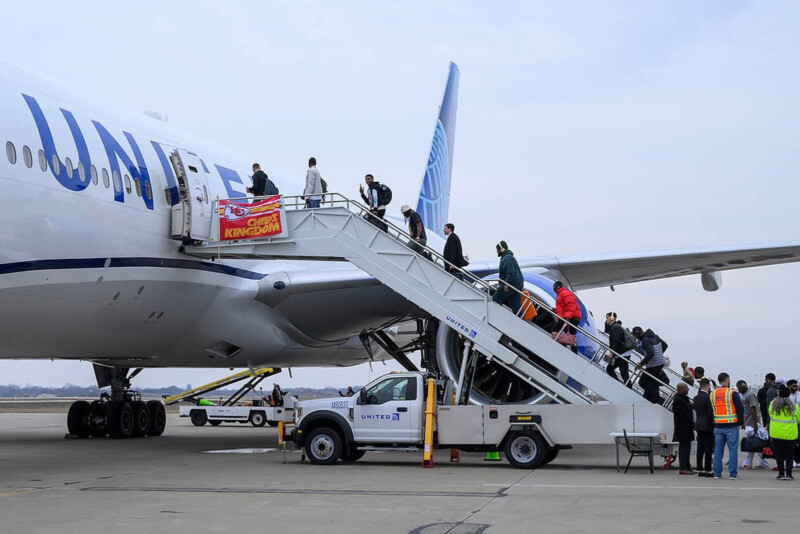
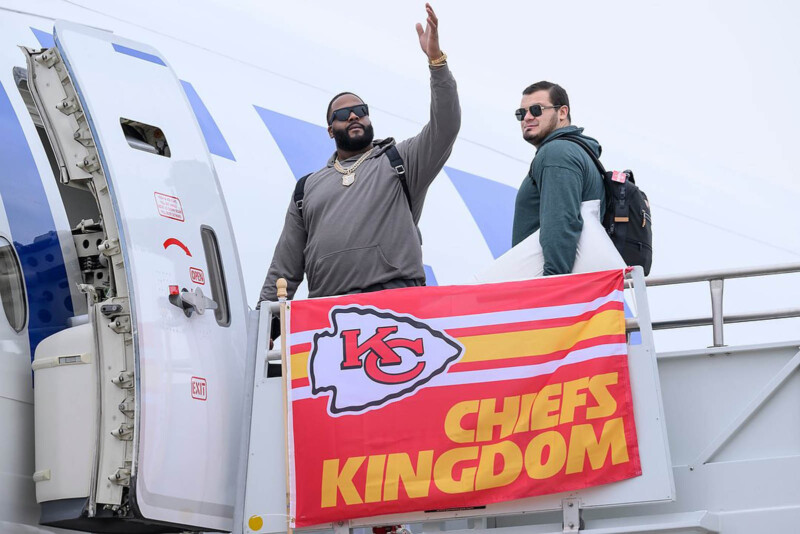
Downtown Kansas City Watch Party, Super Bowl Night
This time I was working for Getty Images, and with over 10,000 people expected to attend the “Red Kingdom Block Party, taking place in a large, covered, outdoor event space in the middle of the Power and Light District, I arrived at 3pm for the 5:30 kickoff. And it was already pretty crowded. Picking up my media credential, I was shown where I could shoot from: one side of the big stage in the main area, from the second floor to the sides of the screen, and in front of the small stage and screen set up on a street outside. There was a table on the second floor behind the screen where I could set up my laptop (14-inch MacBook Pro with a card reader) to download, caption, and transmit.

Normally, for a big event, I’ll use my ThinkTank roller bag to haul my laptop and camera gear. But this time I wore my cameras and used a backpack for the laptop. I figured a roller bag would be even more difficult to get through what was going to be a very crowded location. For cameras, I used my two Nikon Z 9 cameras, one with the Z 70-200mm f/2.8 lens and the other with either the Z 24-70mm f/2.8 lens or the Z 14-24mm f/2.8 lens (working with mostly available light in the evening, I’d need those “fast” aperture lenses). The two cameras were on a BlackRapid double harness, one hanging to each side. The second wide-angle lens, along with a Nikon SB-5000 flash, were carried in a Thinktank waistbelt (Speed Demon, no longer sold), along with a spare camera battery and extra cards (none of which were needed). My most important accessory, though, was the smallest – my earplugs. That place was going to be LOUD!
After locking the backpack and laptop to the table, I spent the next couple of hours exploring the area, figuring out the best way to get to the stage on the street, making some overall photos, and transmitting those. There was public WiFi, which came and went, so I also used my phone as a hotspot to send photos. By the time the teams were introduced, I was on the street in front of the small stage, ready to photograph fans as they reacted to the coin toss and kickoff. From then until halftime, I moved back and forth from the outdoor stage to the second-floor area to the side of the main stage and back. I rarely saw any of the game itself, as I was concentrating on the reactions of the Chiefs faithful as they watched on the two big screens.

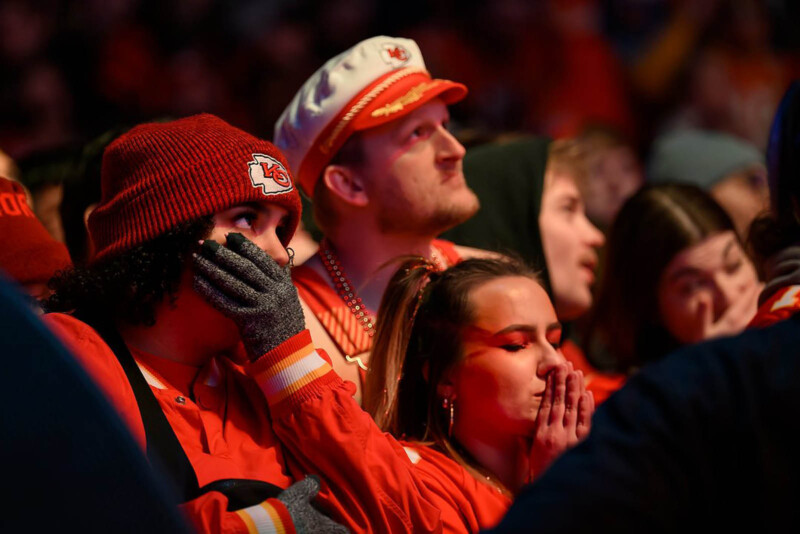
After halftime, it was more of the same, but about halfway through the fourth quarter, I went ahead and slipped into the narrow gap between the fans and the main stage. Technically, I wasn’t supposed to be there, but that’s where the best pictures were, right in front of the fans, with strong emotions riding on every play. I wasn’t the only photographer who did that, and with all the excitement and noise, and the fact that our being there wasn’t creating a problem (people could easily see over us), we were left alone. Emotions ran from elated to depressed, and after each big reaction, I had to turn around to see what had happened. When the Chiefs scored the winning touchdown in overtime, the place went crazy. I’d noticed earlier that the barricade that held the crowd back from the stage had a step on the inside, about every five feet. Fans used those to set their drinks on, but as they erupted in celebration at the end, I hopped up on one for a higher angle.
Throughout the evening, I’d regularly return to my laptop on the second level, behind the screen, to download, edit, caption, and transmit photos to Getty. With about five minutes left in the game, having already sent 34 photos, I packed my laptop and moved it down near the main stage. I figured – win or lose – getting from the stage to the upper level and my laptop might be impossible. Then after the Chiefs won, I shot the bedlam for about ten minutes, pulled out my laptop, set it on top of a speaker, sent nine more photos, and then went back to shooting. At that point, I thought, “What the heck, things are so crazy nobody’s going to notice,” so I hopped up onto the stage itself and made some more pictures of the crowd from there.
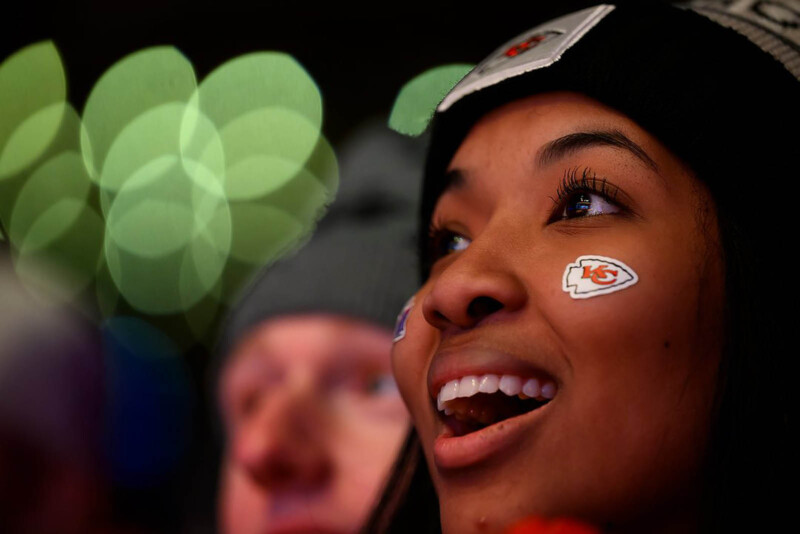
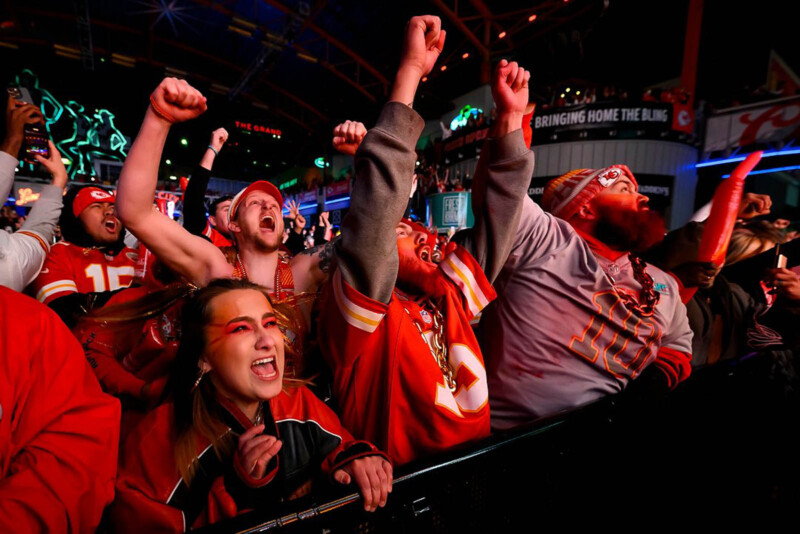
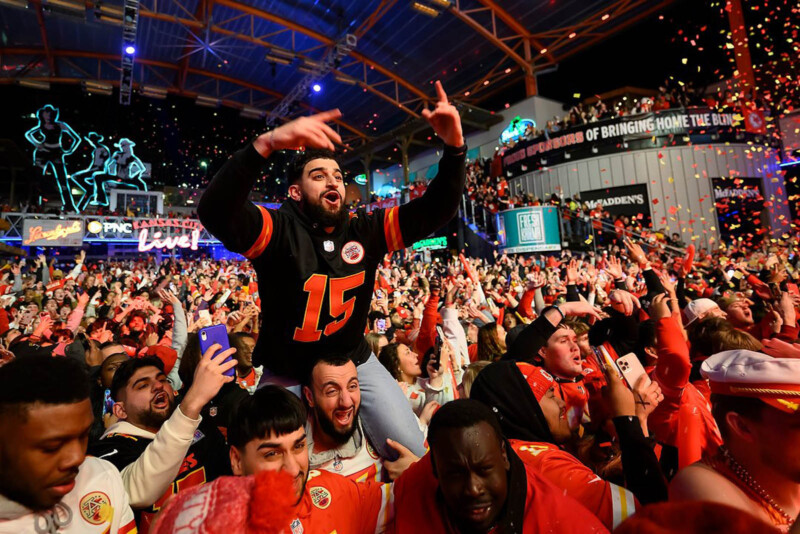
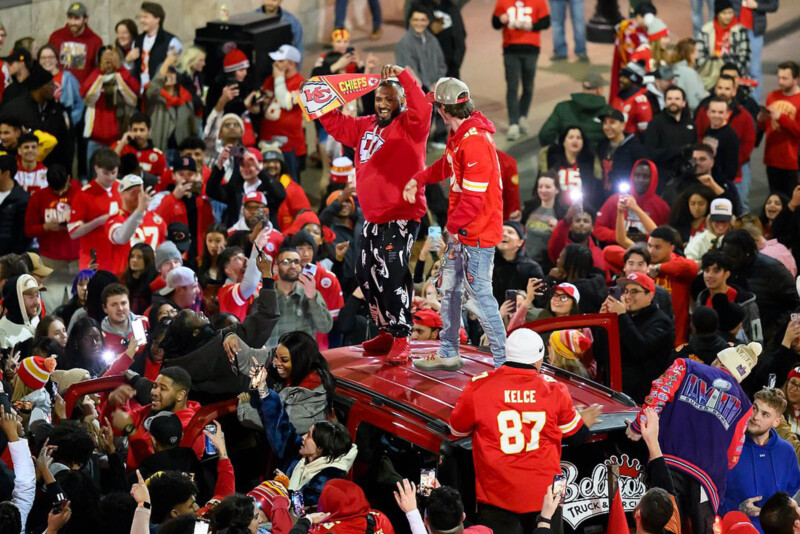
Monday night I finally had time to sit down and watch the game. I will say, it removes a lot of the stress of watching a game if you already know the team you cover is going to win.
Super Bowl Parade and Rally
Having photographed last year’s for the Associated Press, they asked me to do it again. And once more, they asked me to cover the rally at Union Station, working from the media platform set up about 50 yards from the stage. For equipment, I’d use my two Nikon Z 9’s again, with the Nikkor Z 180-600mm f/5.6-6.3 lens (on a tripod and gimbal), the Z 24-200mm f/4-6.3 lens, and the Z 14-30mm f/4 lens. This time I’d use my Thinktank roller bag to haul most of the gear in, since I’d be there well before the bulk of the crowd, and a sling bag for the tripod. In addition, I’d bring a folding chair (you’ll understand why in a minute) and of course, earplugs and knee pads (my two favorite photo accessories).
The parade was scheduled to start at 11am, about two miles away from where I’d be at Union Station. That meant getting up at 4:30am to be on the media platform setting up by 6am. Why so early? Schools had been canceled in most of the area, the forecast was for a sunny day with temps reaching 60 degrees, which meant they were expecting around a million people to flood downtown. For me, that meant a lot of time to kill as the parade wouldn’t reach my area at Union Station until almost noon. Thus the chair. But there was work for me to do before that.
While I arrived a bit before 6am, there were fans who’d arrived even earlier. So once I was set up on the media platform, I took my two cameras, with the shorter lenses, and headed out into the crowd. Today, covering almost any event for a wire service means uploading pictures from before it starts to well after it’s over, so I needed to begin making pictures. My first photos were silhouettes of people before the sun came up. I then went back to the platform, downloaded, edited, captioned, and sent a couple of photos. A little later, now with sunshine to work with, I went back into the crowd to make, and then send, more photos. As the morning wore on, I shot more photos of the crowd packing in around Union Station, singing and chanting and celebrating, and sent those. Rinse, repeat.
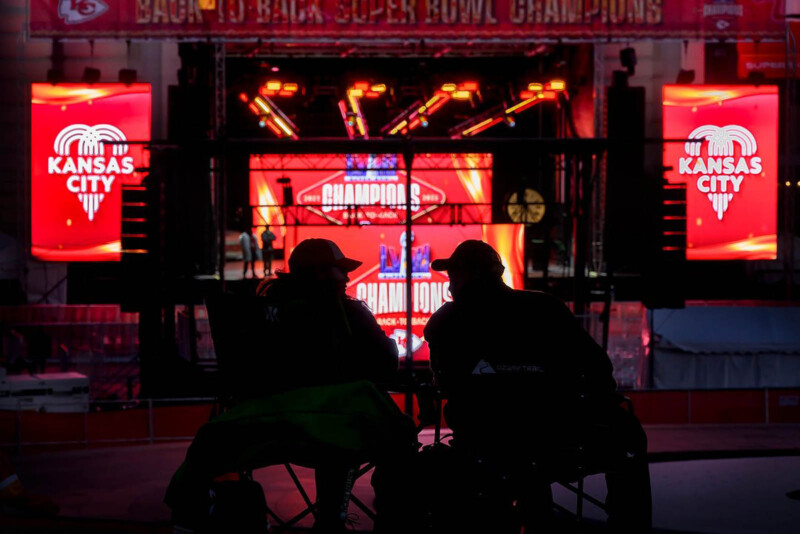
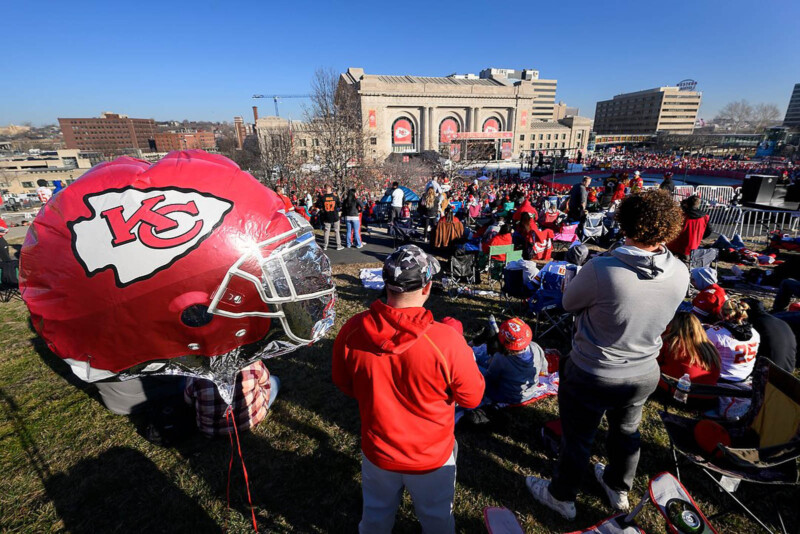

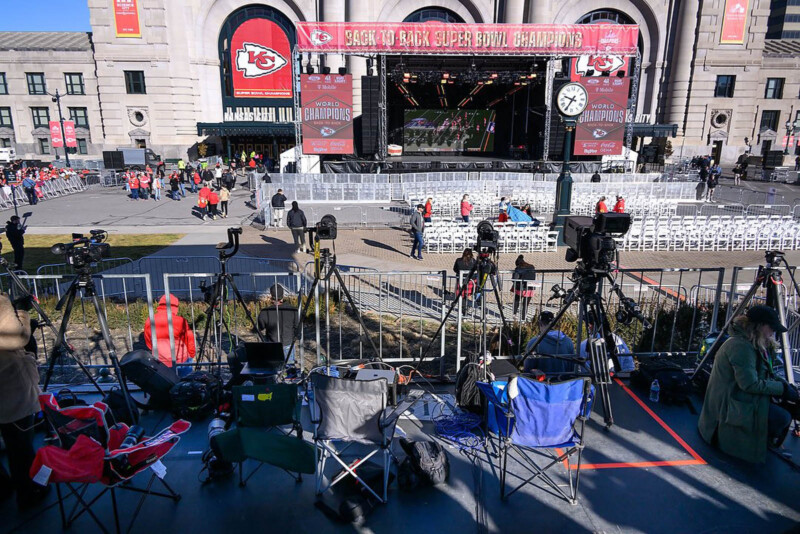
Finally, at 11:45am, the first buses came into view on the road to Union Station. But don’t get too excited. There were lots of buses with staff, friends, and family before the players started showing up, which was around 12:30pm. By that time most of the players had hopped off the buses and were greeting fans at the edges of the road. Despite still being pretty far away, that could make some good pictures except… heat waves. Last year it was cold, and the heat generated by the crowd between where I was and the players created heat waves. This time, it was probably the sun on the pavement. Regardless, you’d get maybe one out of fifteen frames that were usable. Ugh.
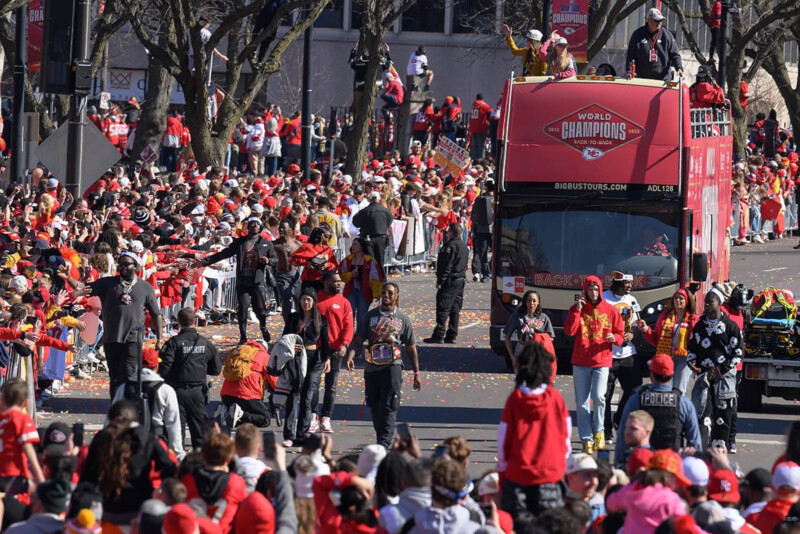

Finally, around 1pm, we got people on stage. Yay! Oh, never mind, first the mayor, the governor, the honor guard, the drum team, the cheerleaders… Eventually, at about 1:15pm, the trophies, the owner, and eventually the team made it there. At 1:45pm the speeches were over, the confetti flying while some players partied on the stage and others started to leave. Which meant I was pulling cards from my cameras, downloading, editing, captioning, and transmitting again.
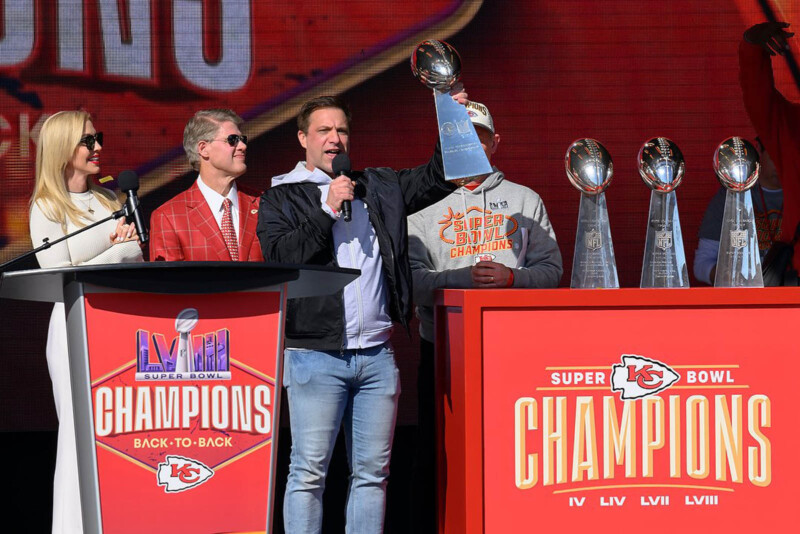
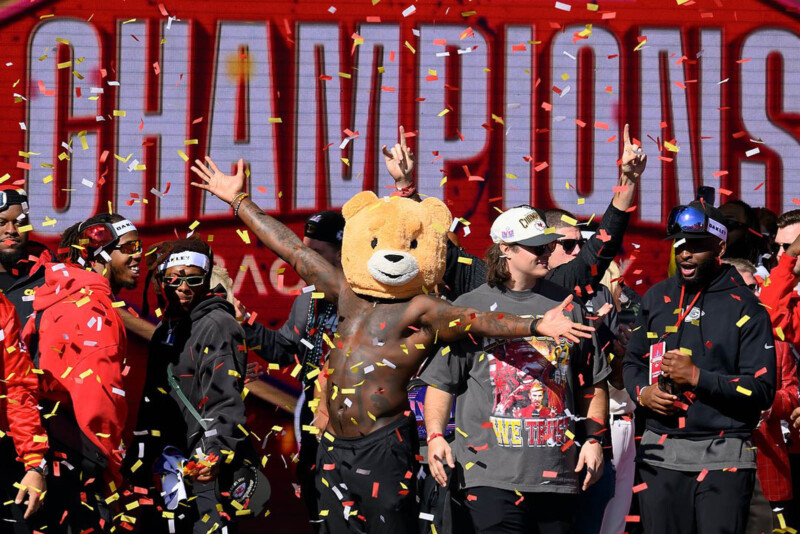
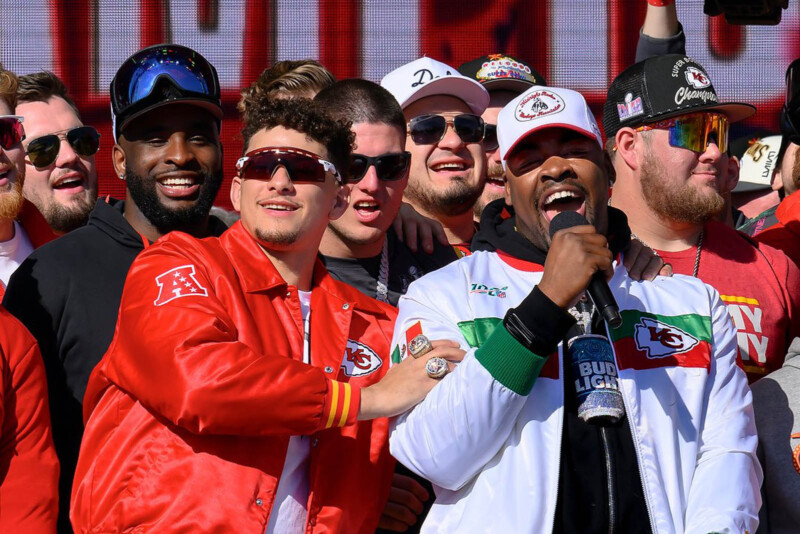
And then one of the organizers came onto our platform and said we might need to move, there’s been an “incident” in Union Station. Huh?
By now, everyone knows there was a shooting. At the time, though, I didn’t. But I’ve spent a large part of my life being a photojournalist. So I looked for anything I could make pictures of. Medical personnel wheeling a gurney into Union Station. Police, with weapons out, jogging, jumping fences. A number of ambulances pulled into a nearby intersection. And finally, a bloody woman was hauled to one of those ambulances. I moved that picture quickly, then when police asked us to evacuate the area, threw my gear together and hauled it out.
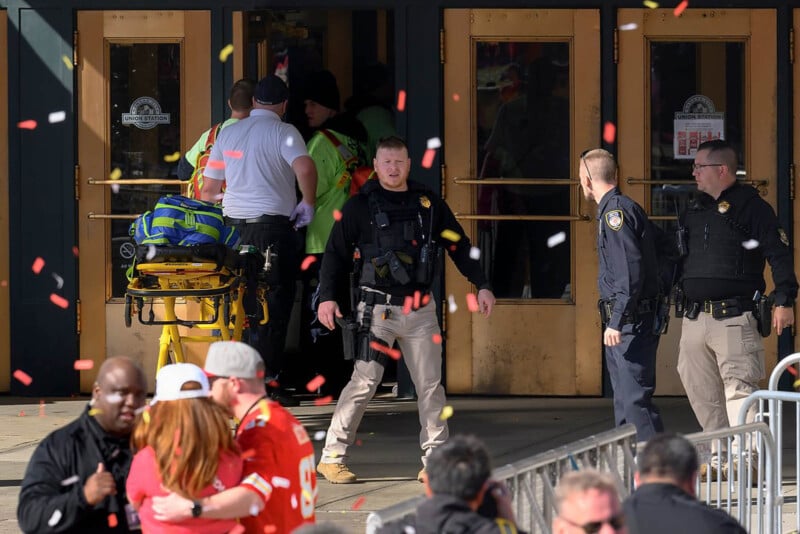
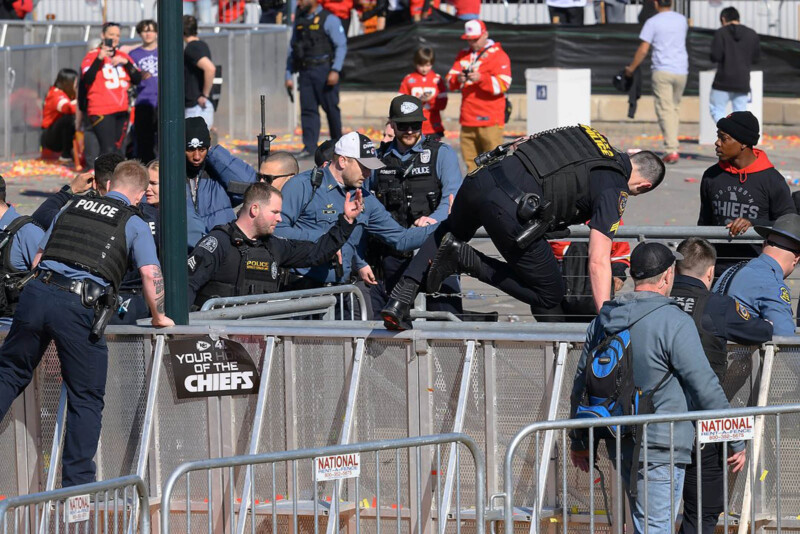
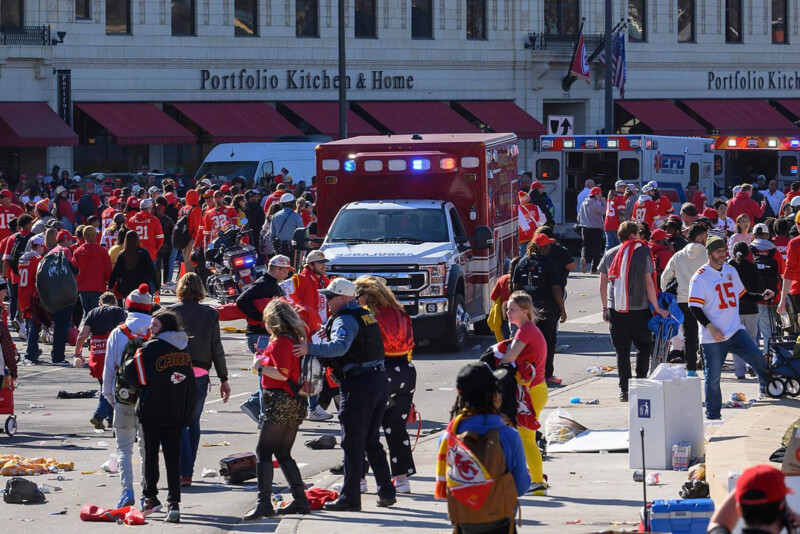

Once clear of the police lines, I made a few more pictures of the scene, then went to the back door of the Associated Press offices, which were, oddly enough, right at the corner where much of the activity was. Inside, I downloaded the last of my photos and started sending again while communicating with the editors in New York. Charlie Riedel, the AP staffer for Kansas City, who’d been covering the rally from a different position, came in. He picked a few more of my pictures to send, then went back outside. By the time I returned home, it was over 12 hours since I’d left and I’d sent 64 photos. But I wasn’t done yet. Because of the shooting, I hadn’t been able to move most of my photos from the players and coaches on stage at the rally. This meant I sat down for my second meal of the day, then prepped and sent 42 more before calling it a night.
Was I ever in any danger? I don’t think so. From what I’ve seen of where the shooting took place, I was pretty far away, seated, and blocked by lots and lots of people. And with my earplugs still in, working on sending photos, I didn’t hear the gunshots.
Over the next week, my photos from the shooting were used all over the world, hundreds of times. And friends across the U.S. sent me photos of some of those used on the front pages of their local newspapers. But you know what? I got little satisfaction from that. I did my job, but was sad that such a joyous day for Kansas City and Chiefs fans ended so horribly. Unfortunately, I’m a little surprised this was the first mass shooting I’ve had to cover, and even more sad, it probably won’t be my last.
About the author: Reed Hoffmann is a photographer and photography instructor who has been in the photo industry for decades and who has used every Nikon DSLR (and taught most of them) and nearly every Nikon mirrorless camera. The opinions expressed in this article are solely those of the author. Follow along with Hoffmann’s latest workshops here. You can also find more of Hoffmann’s work and writing on his website, Facebook, Instagram, and Twitter. This article was also published here.
Image credits: All photos copyright the Associated Press and Getty Images






